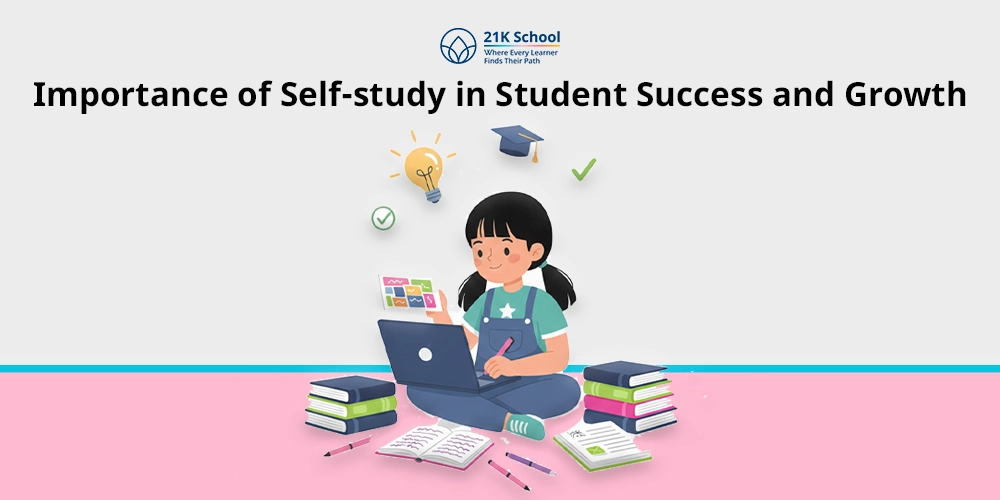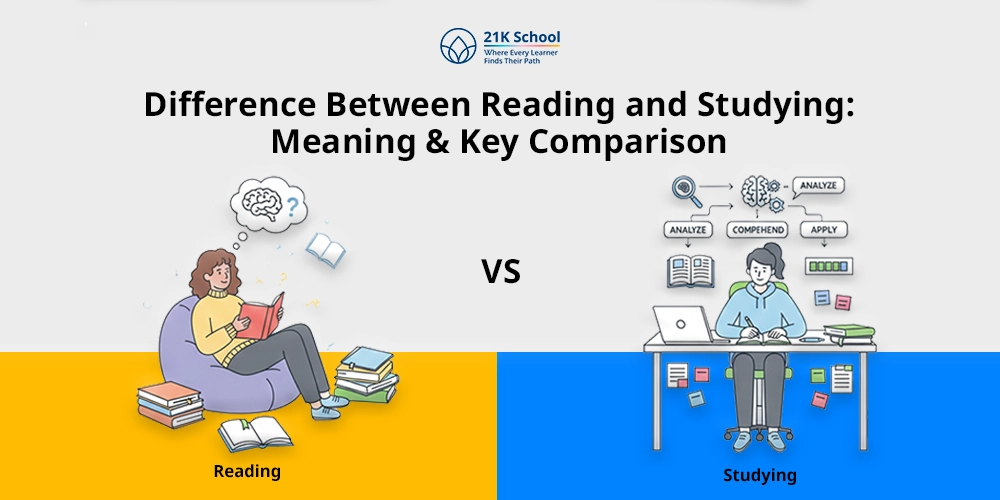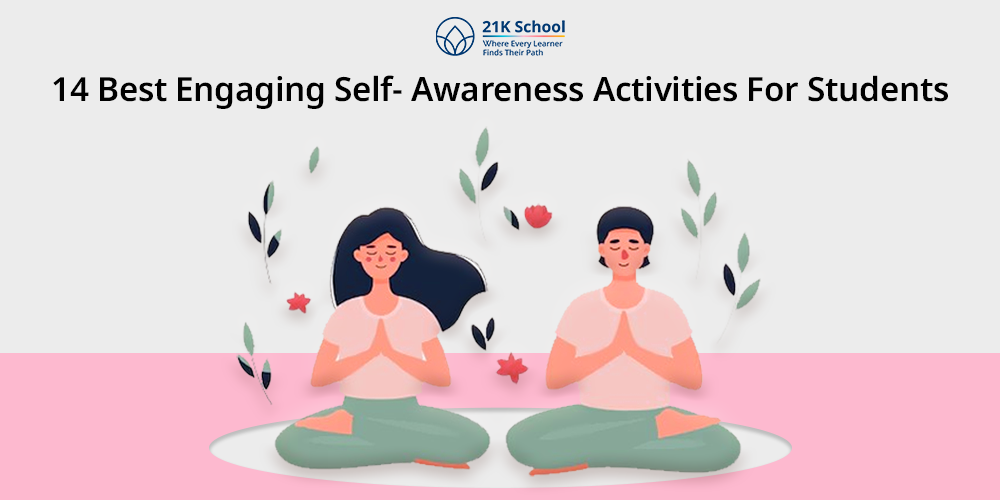
In today’s multi- tasking scenarios, students keep running from one task to another task. In this hustle and bustle, students forget to reflect upon themselves.
Here, they need self- awareness skills which help in self- reflection and understanding.
Self- awareness is the ability to comprehend one’s thoughts and emotions, required for growth and success. It empowers students to make decisions, manage emotions and feelings, and understand each other.
With the help of self- awareness skills, students can gain confidence, set goals and engage in social activities.
Also read: How to raise environmental awarenss among young people.
Learning self- awareness can be fun with the help of these self- awareness activities. Here you can explore such fun and engaging self- awareness activities through these steps.
Contents
- Top 14 Self- Awareness Activities for Students in the Classroom
- 1. Read Positive Affirmations
- 2. Indulge in New Activities
- 3. Emotions Check-In
- 4. Making a Vision Board
- 5. Gratitude List
- 6. Discussing their Strengths and Challenges
- 7. Write Self-Compliments/Personal Achievement Chart
- 8. Make a Hopes And Dreams List
- 9. Reading Self-Awareness Books
- 10. Write in a Journal
- 11. Research Future Careers
- 12. Host a Show and Tell
- 13. Discuss Values and Beliefs
- 14. ‘Would You Rather’ Questions
- Examples of Self-Awareness Activities
- Importance of Self-Awareness Activities in School
- Final Thoughts
Top 14 Self- Awareness Activities for Students in the Classroom
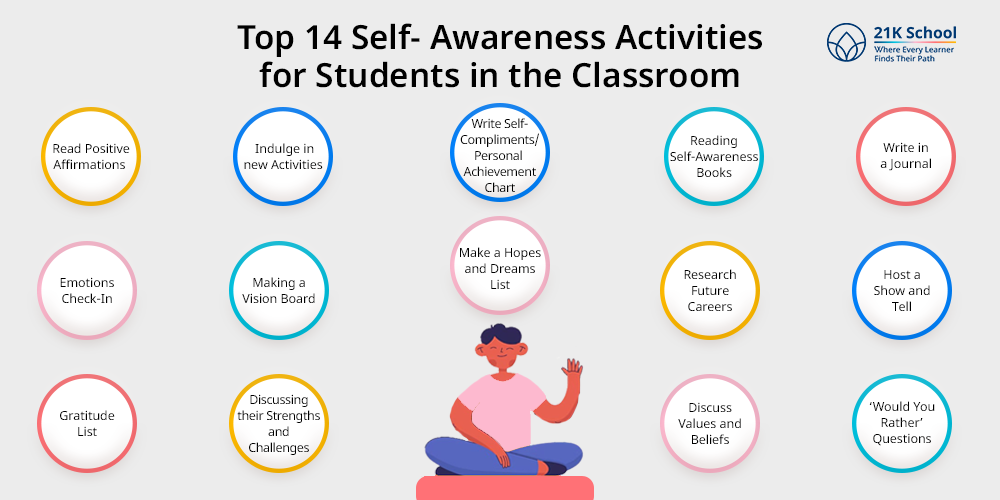
Here are top self- awareness activities for students that can be implemented in the classroom. These activities influence students in many different ways, such as, emotionally, mentally, behaviourally, socially, etc.
1. Read Positive Affirmations
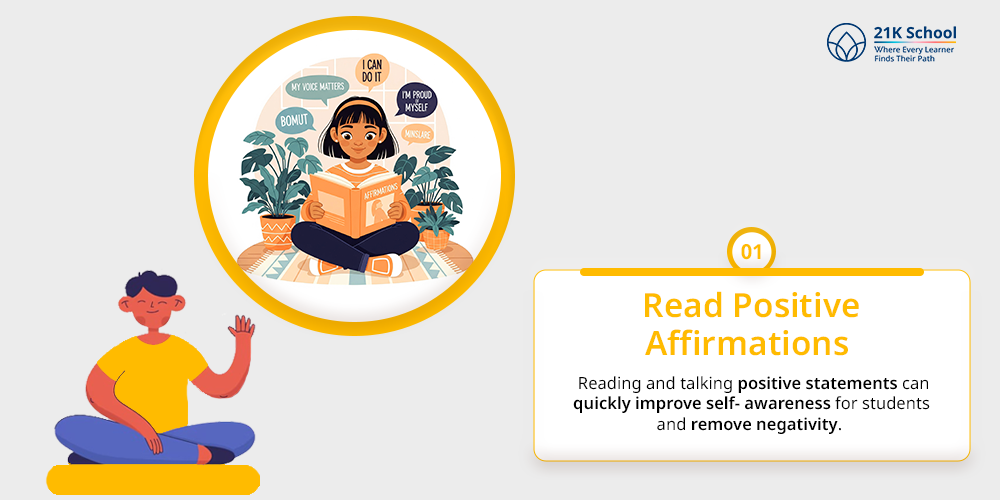
Positive affirmations boost your confidence and your strengths. Reading and talking positive statements can quickly improve self- awareness for students and remove negativity.
How to Play?
Reading positive affirmations develops your inner confidence and gives positive affirmations.
Repeated use of positive statements can change your perception of yourself. They can make statements likewise,
“I can do.”, “My voice matters.”, “I’m proud of myself.”, etc.
2. Indulge in New Activities
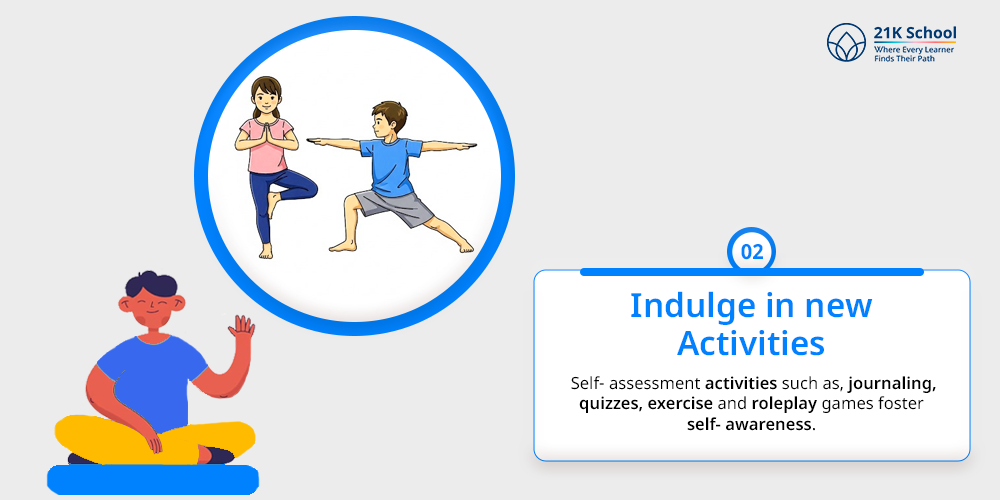
Indulging in new activities promotes self- awareness among students. Self- assessment activities such as, journaling, quizzes, exercise and roleplay games foster self- awareness. These activities also create a safer and supportive environment for students.
How to Play?
Activities could be such as, playing music, drama, collage, digital drawing, etc.
3. Emotions Check-In
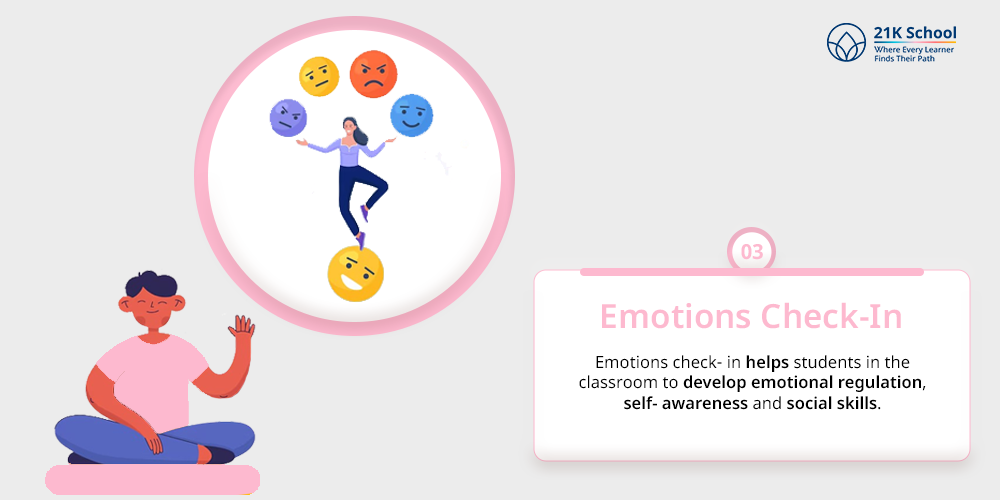
Students know to understand their emotions and feelings, and reflect accordingly. Emotions check- in helps students in the classroom to develop emotional regulation, self- awareness and social skills.
How to Play?
You can try and check your emotion on each day like, angry, sad, happy or excited. Or prepare an emotion chart or do journals about your emotions and feelings.
4. Making a Vision Board
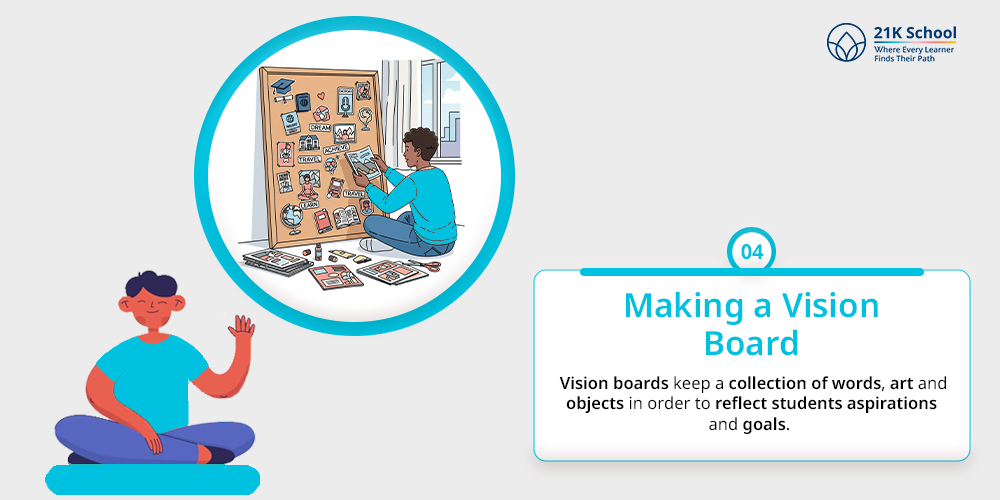
Vision boards keep a collection of words, art and objects in order to reflect students aspirations and goals. It assists them in sticking to their objectives and goals.
How to Play?
Encourage students to make a vision board with their weekly, monthly, and then bi-yearly targets.
5. Gratitude List
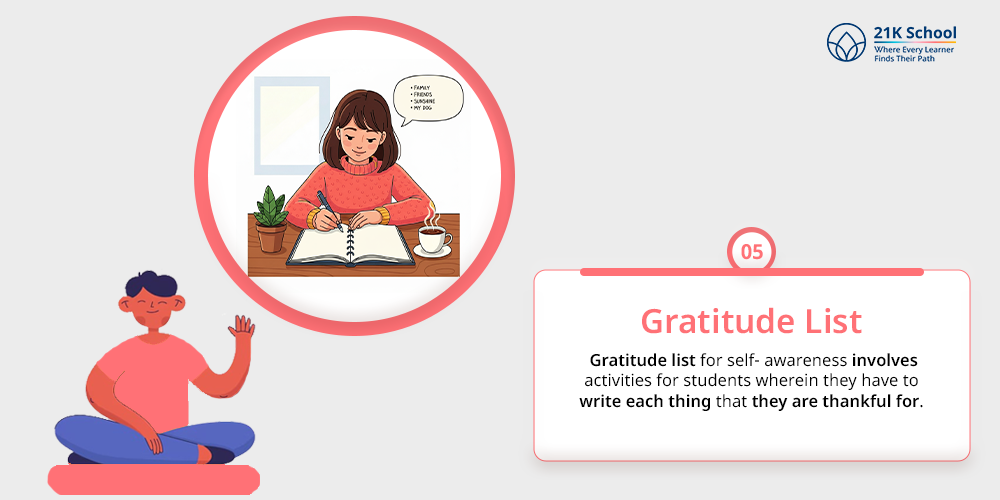
Gratitude list for self- awareness involves activities for students wherein they have to write each thing that they are thankful for. Students are asked to write appreciation notes for using images and magazines.
How to Play?
Gratitude statements like, “I’m thankful.”, “You made me smile”, etc. can be used for such gesture.
6. Discussing their Strengths and Challenges
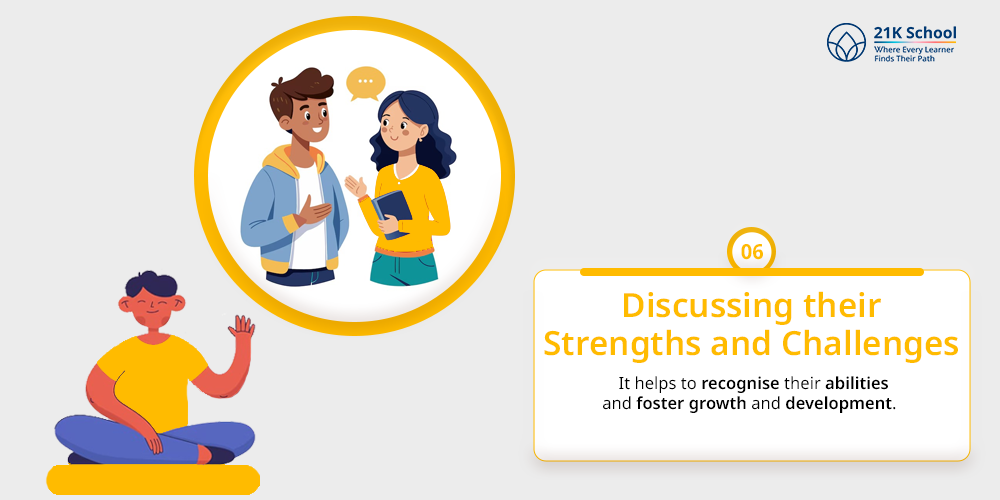
Discussing students’ strengths and challenges promotes self- awareness and boosts them. It helps to recognise their abilities and foster growth and development.
How to Play?
Activities like discussions, journaling and group activities help students in their reflection process.
7. Write Self-Compliments/Personal Achievement Chart
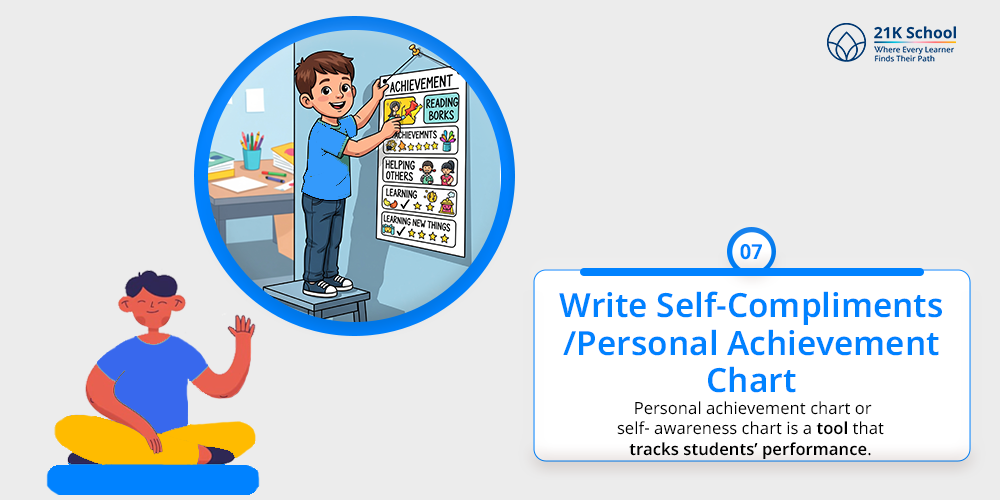
Personal achievement chart or self- awareness chart is a tool that tracks students’ performance. Through various self- awareness activities, it assesses students’ accomplishments.
How to Play?
Start with the latest achievements and maintain the chronological order in the chart. It maintains strengths and weaknesses charts with emotional regulation and growth track.
8. Make a Hopes And Dreams List
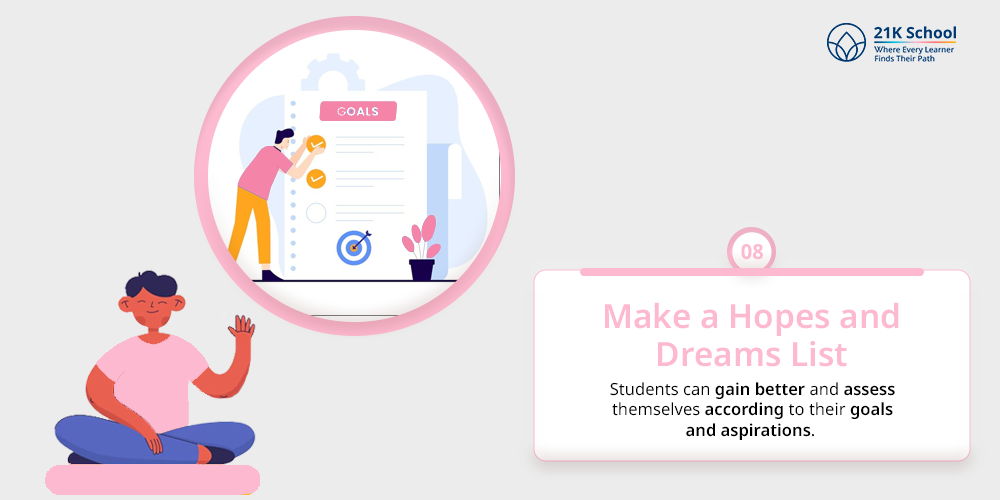
Encouragement of hopes and dreams is a powerful tool for students’ self- awareness. Students can gain better and assess themselves according to their goals and aspirations.
How to Play?
Such activities also help in creating a positive classroom environment.
9. Reading Self-Awareness Books
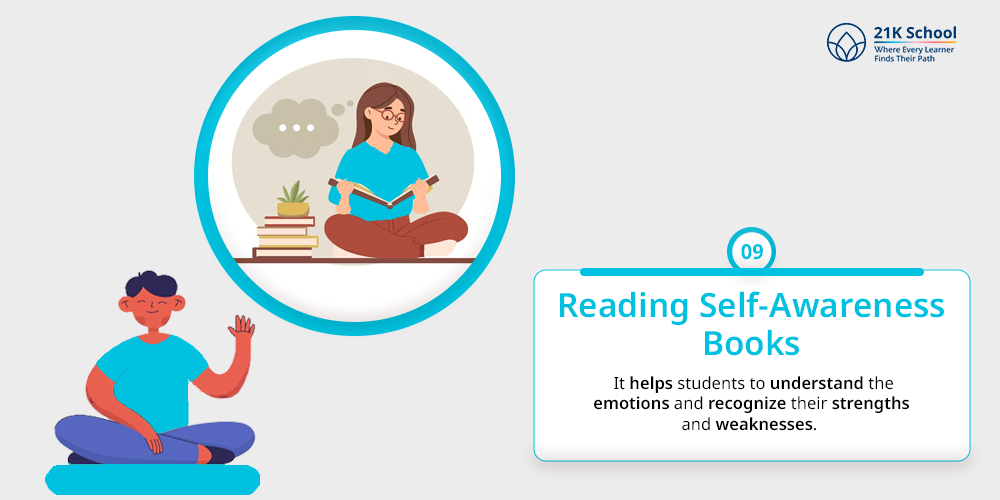
Reading books can engage students in self- awareness activities. It helps students to understand the emotions and recognize their strengths and weaknesses.
How to Play?
Different self-awareness books and discussions help them in the self- reflection process.
10. Write in a Journal

Journal activity involves journal writing for themselves and keeping it private. Students can write about different prompt actions that they are doing.
It helps in self- reflection, emotional management, strength and weakness chart out and self- awareness.
How to Play?
Writing in a journal is similar to diary writing for learners to get aware about their daily progress and academic success.
11. Research Future Careers
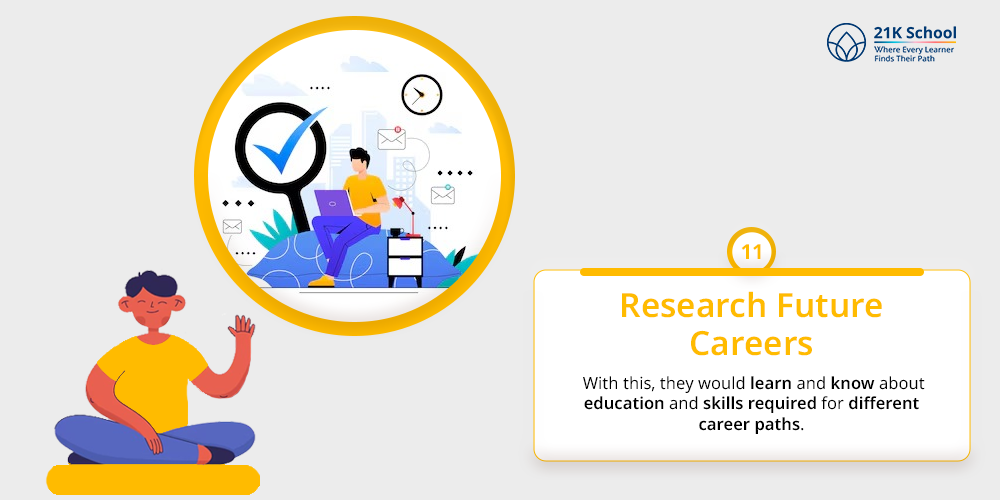
Researching future careers helps students explore different career paths. With this, they would also learn and know about education and skills required for different career paths.
How to Play?
Let the students think critically about their career paths and choose accordingly.
Read more on prepare children for the future.
12. Host a Show and Tell
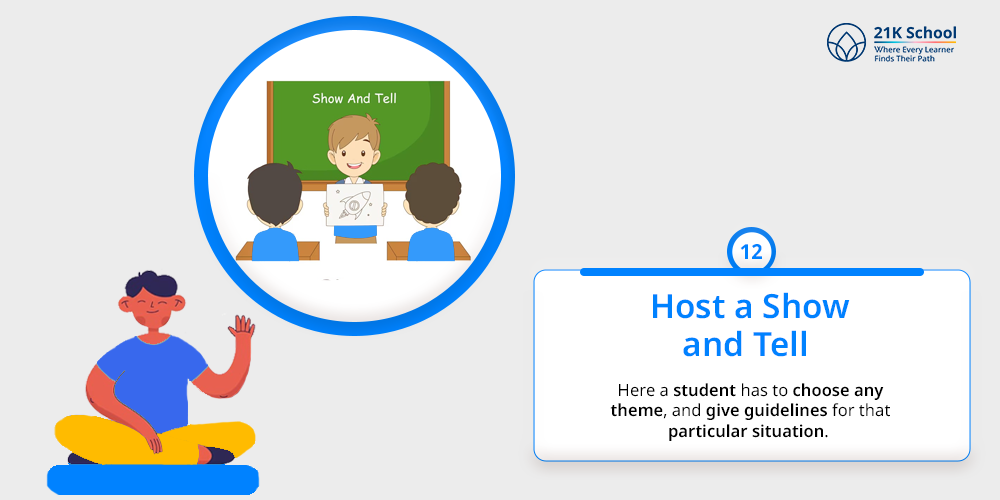
These activities for students are a powerful tool for self- awareness among students. Here a student has to choose any theme, and give guidelines for that particular situation.
How to Play?
Start the host a show and tell them to promote self- awareness, social- awareness and build confidence and relationships.
13. Discuss Values and Beliefs
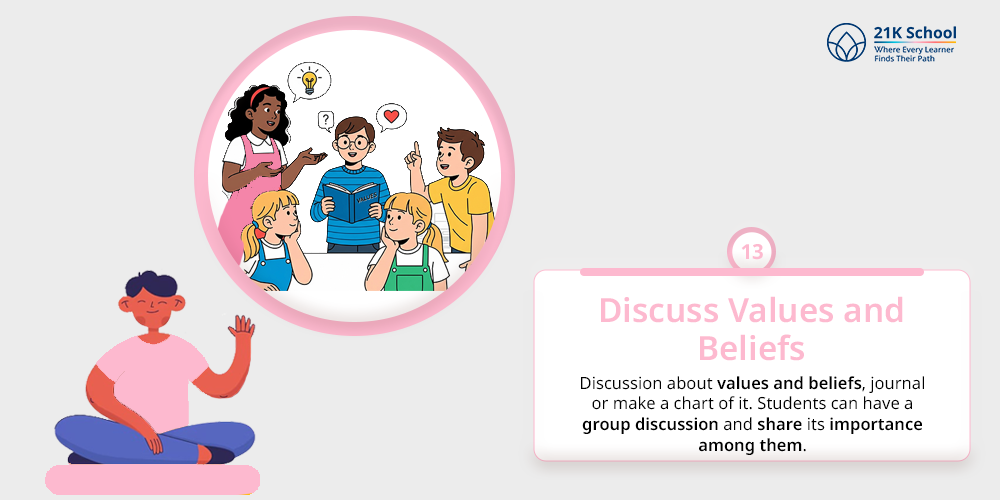
Discussion about values and beliefs, journal or make a chart of it. Remember its importance and from where they come from. Students can have a group discussion and share its importance among them.
How to Play?
Discuss the existing values and beliefs of the learner which will boost self- awareness and make us responsible.
14. ‘Would You Rather’ Questions
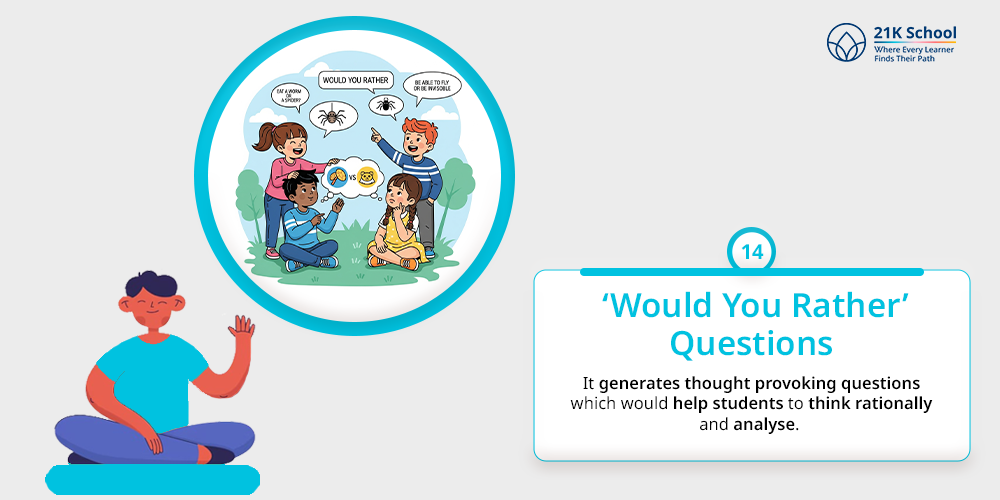
It generates thought provoking questions which would help students to think rationally and analyse. It sparks laughter, conversations, deep analysing thought processes and boosting social- emotional learning skills.
How to Play?
Questions or discussions can be based on particular themes or can be around class subject matters.
Examples of Self-Awareness Activities

Examples of self- awareness activities can be easily applied for students, either in the classroom or at home. These activities would help them in the self- reflection process and understanding each other better.
1. Strength and Challenge Chart
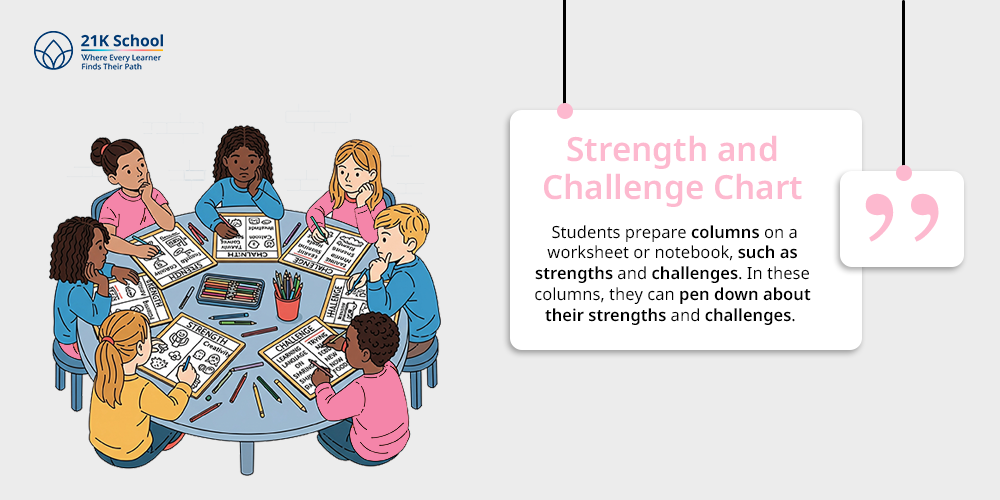
Here students prepare columns on a worksheet or notebook, such as strengths and challenges. In these columns, they can pen down about their strengths and challenges.
These notes can be kept as their own assessment, where they can check their doings and progress, respectively.
Playing methods:
- Give each student a chart with two columns like, strength and challenge.
- Make them write according to their inner callings.
- Work on the challenges column that they are facing.
Also read: What is social emotional learning? It helps not only in academic development but also in professional development of students.
2. Emotion Charades
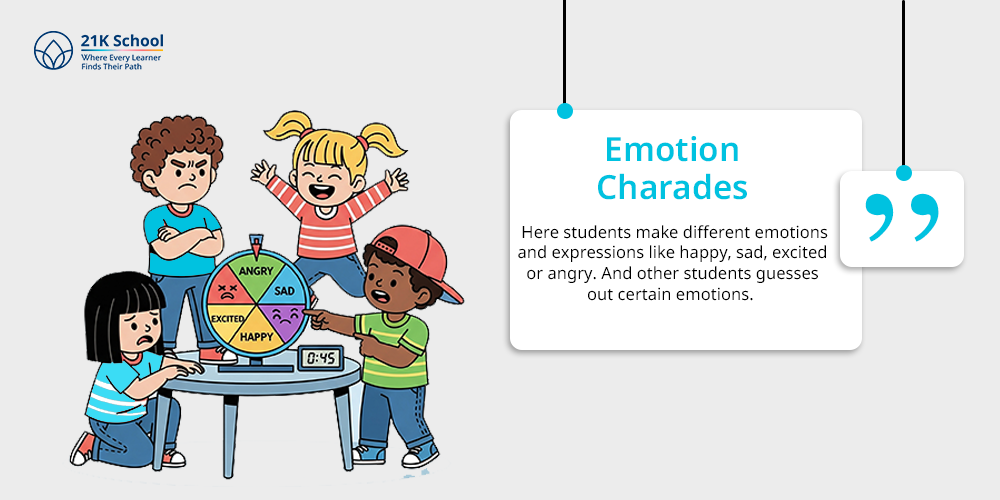
Here students make different emotions and expressions like happy, sad, excited or angry. And other students guesses out certain emotions.
These activities increase self- recognition, empathy and social interaction.
Playing methods:
- Place an emotion wheel with a timer in front of the students.
- Let them choose any emotion as per their choice such as, angry, sad, happy or excited.
- Act as per selected emotion without speaking.
- Other students have to guess the emotion that is demonstrated.
3. Mirror Talk
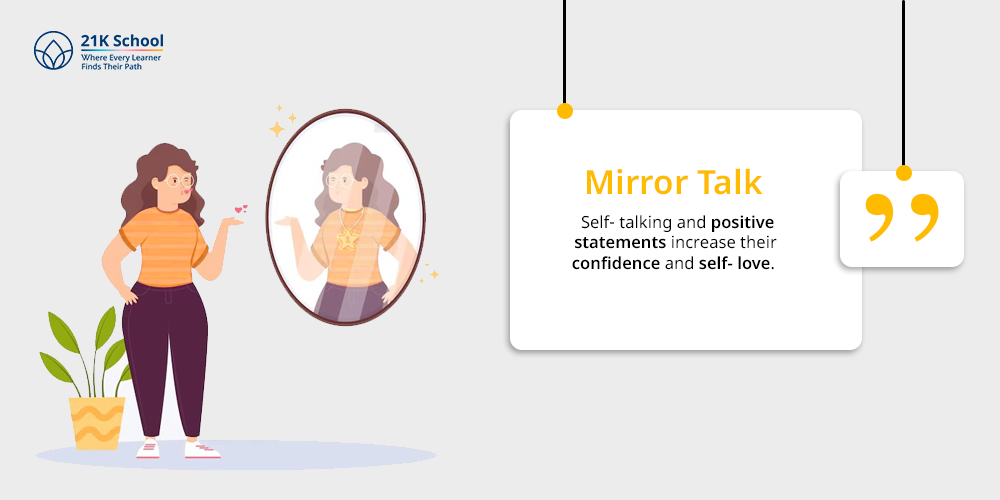
In mirror talk, students usually stand in front of mirrors and do talking on their own. Self- talking and positive statements increase their confidence and self- love.
Also read: How creating a positive learning environment helps students in self- awareness activities.
Playing methods:
- Have students stand in front of the mirror and they have come one- on- one.
- They can take up 3 or 4 positive affirmations such as, “I can do”, “I’m proud” or “ I’m kind”.
- Each of them has to speak their own part in front of the audience.
4. Roleplay
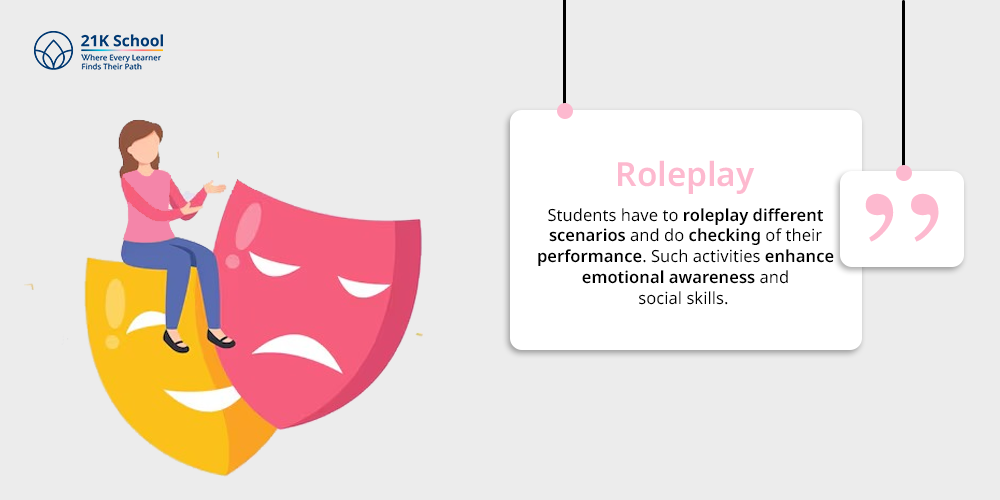
Students have to roleplay different scenarios and do checking of their performance. Such activities enhance emotional awareness and social skills.
Playing methods:
- Choose a scenario or play.
- A student has to read a scene and they have to act out in front of the audience.
- Later on, students can discuss its importance and effect.
5. Breathing Exercises
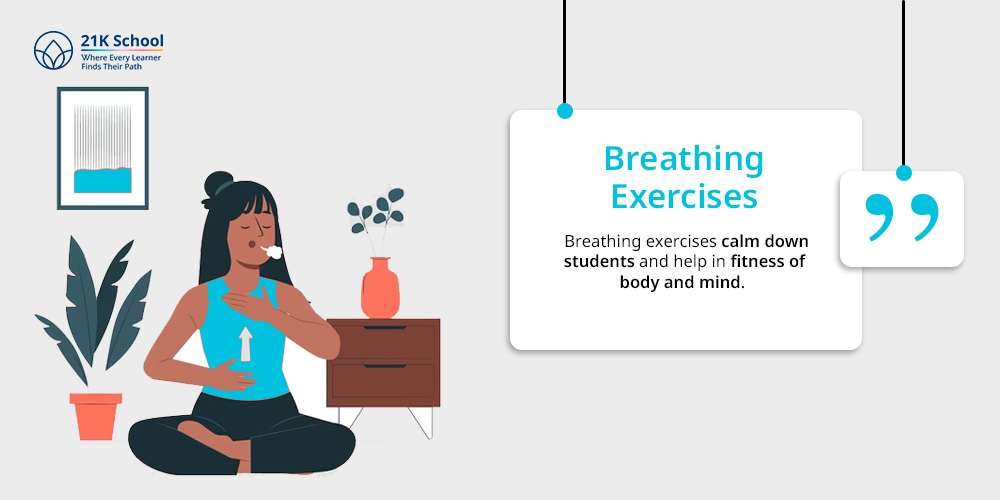
Breathing exercises calm down students and help in fitness of body and mind. It helps students relate to their thoughts and emotions respectively.
Playing methods:
- Place a square card on the board.
- Make students do different breathing exercises such as, inhale and exhale.
- Make them repeat in order to learn and practice.
6. Goal- Setting Activities
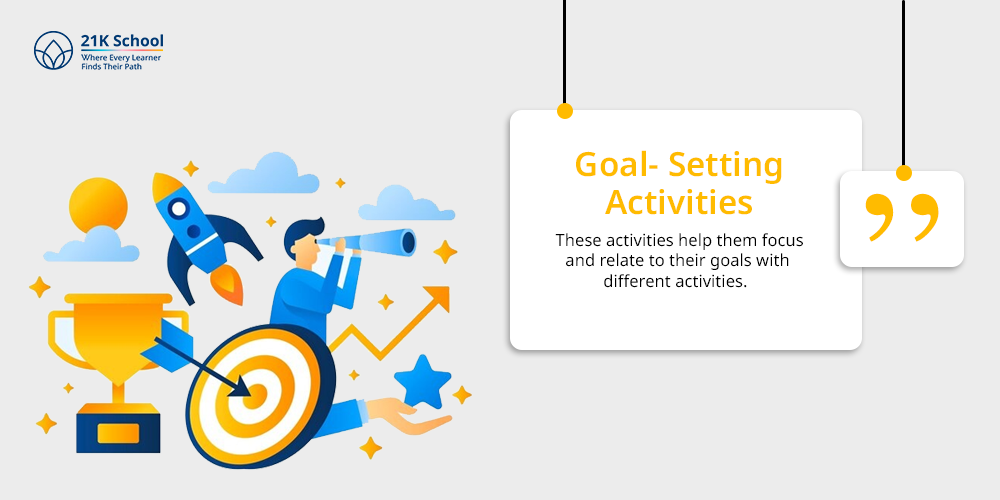
Students set goals for themselves and track their doings. These activities help them focus and relate to their goals with different activities.
Playing methods:
- Each card has a goal written on it.
- Students have to choose a card and take it as a challenge.
- Share and discuss what helped you in reaching or completion of your goal.
Importance of Self-Awareness Activities in School
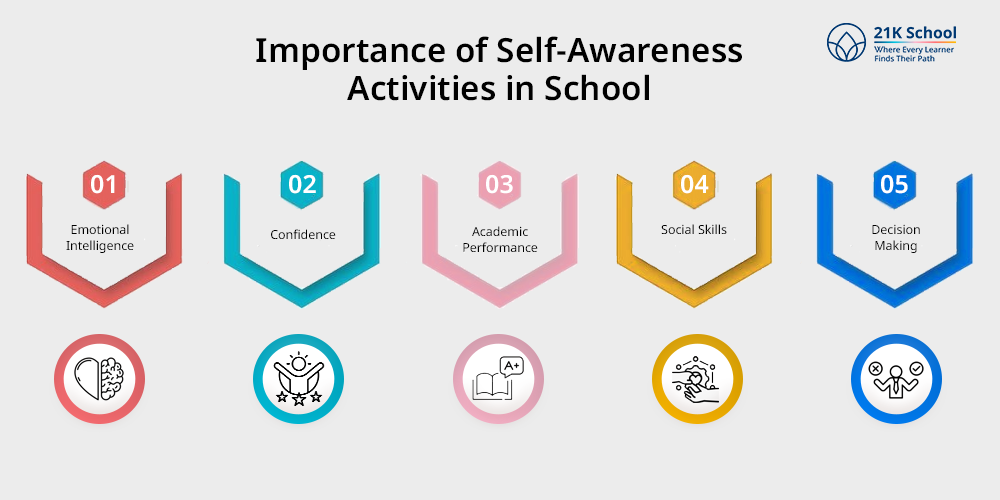
Self- awareness activities are crucial for students in development of their personal, professional and social skills. Students in school are taught certain self- awareness techniques which would foster their skills.
Here are different points of why self- awareness activities in school are important for students.
- Emotional Intelligence: Emotional intelligence helps students recognize and understand their emotions. With emotional regulation, students can manage their emotions and feelings in an effective manner.
- Confidence: Students are confident, when they are able to recognize their strengths. Self- awareness helps students address their weakness, constructively. They can easily fight their odds, when they are aware of their strengths and shortcomings.
Here you can read in detail about how to build confidence in children.
- Academic Performance: Academic performance like participation in different learning areas are increased with the help of self- awareness activities. Self- assessment activities like assignments and observation boost up students for their improvement.
- Social Skills: Social skills are boosted among the students when they are aware of their strengths and skills. It enhances communication as well as problem- solving skills. This helps in resolving conflicts and building empathy for each other.
To help you children learn social skills, read in detail about how do children socialize with each other.
- Decision Making: Decision making skills demand to monitor judgements, considering past evidence and information. These activities in making decisions in a more responsible manner.
Final Thoughts
Self- awareness activities give you an understanding about your strengths and weaknesses, thoughts and feelings. It helps you know what matters to you and how to react in different situations.
Self- awareness builds your confidence, decision- making skills, manages your emotions and stress and helps you to improve your relationships. It is important and required in every step and field.

